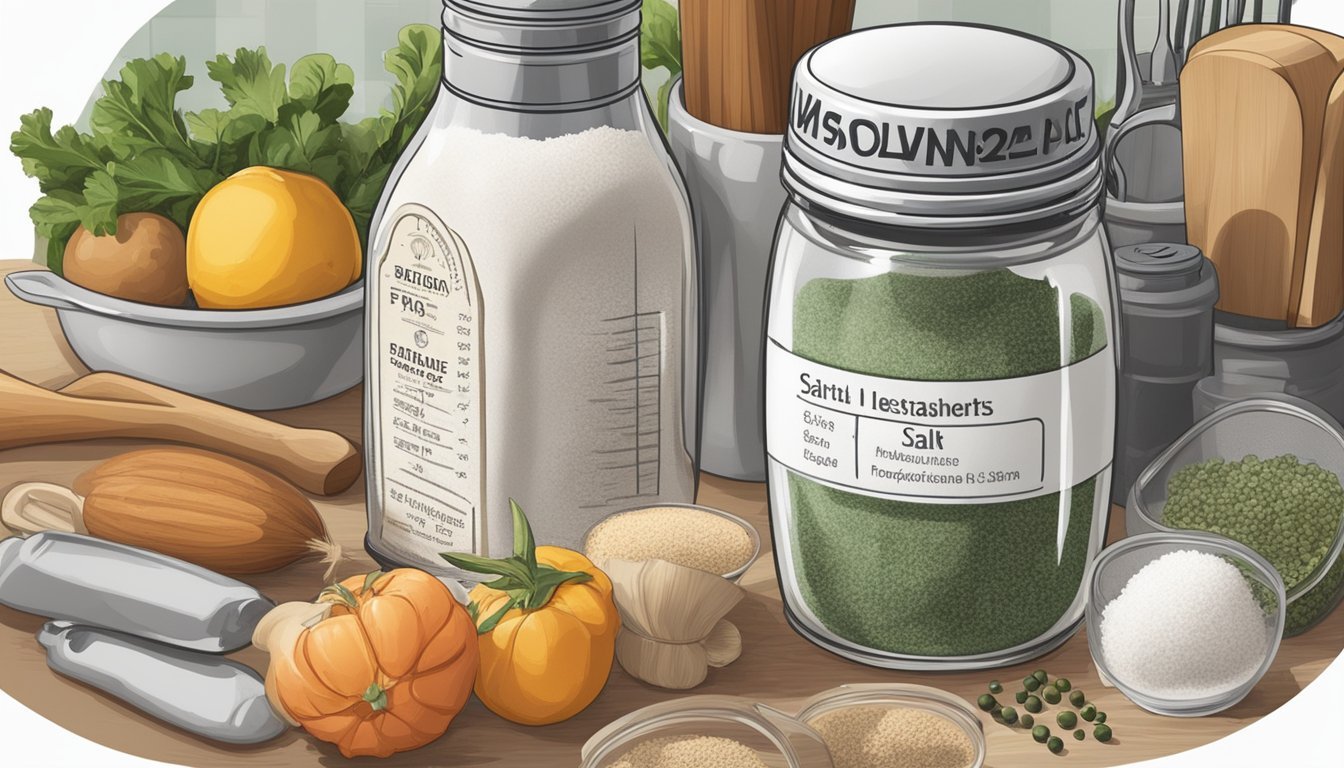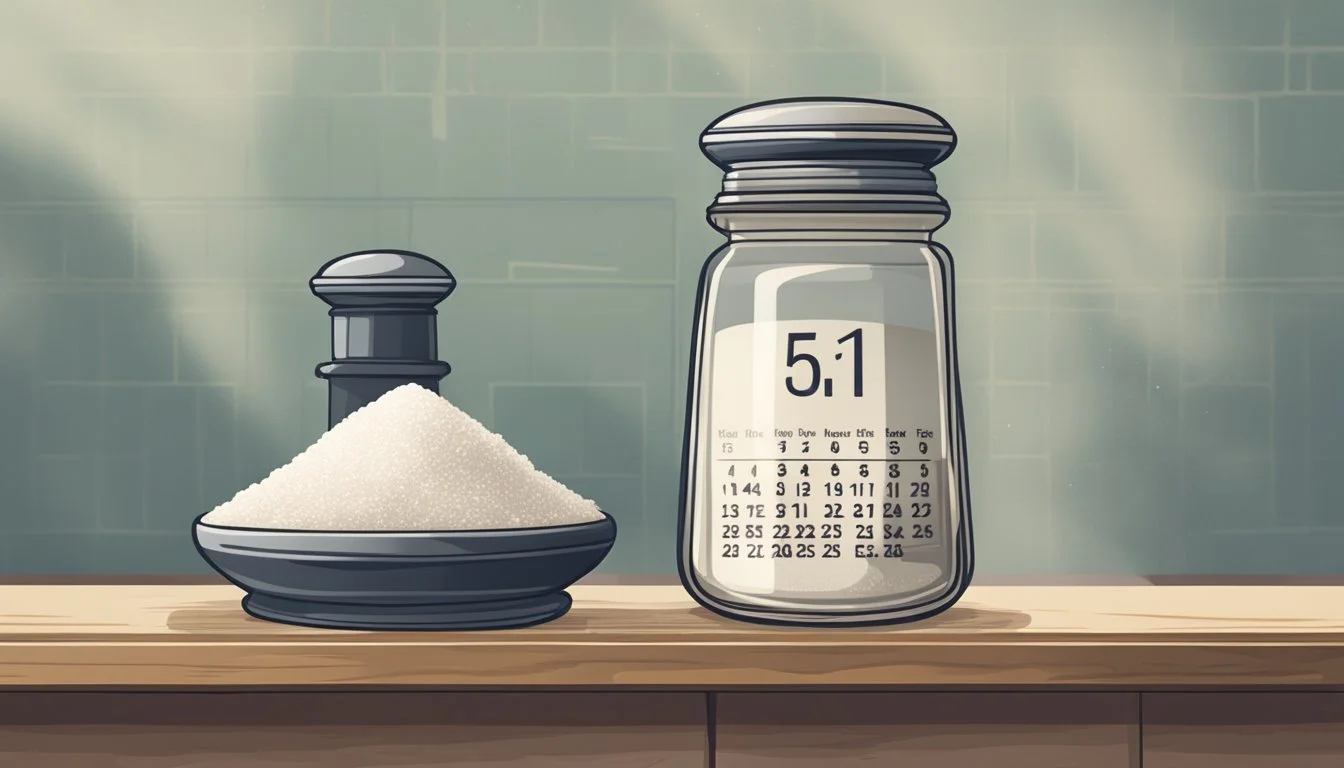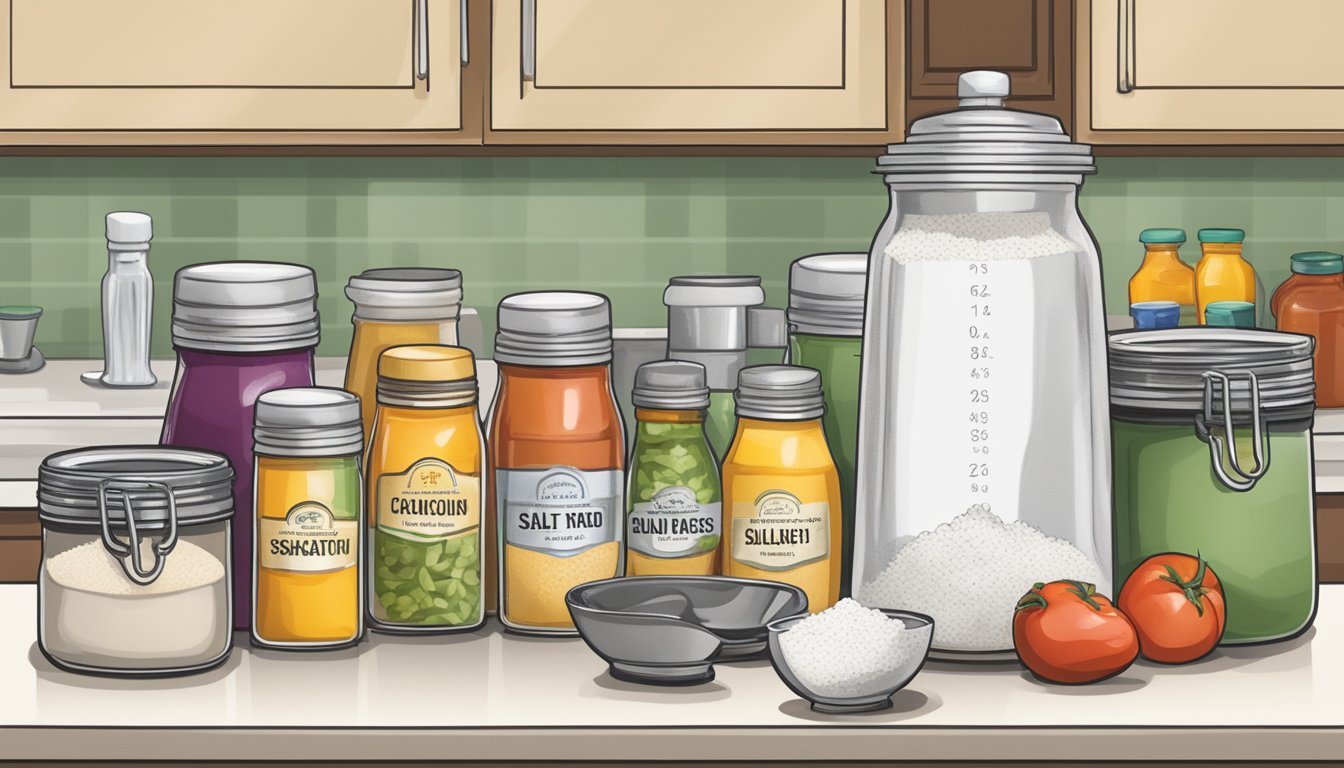How Long Does Salt Last?
Unveiling Its Shelf Life and Storage Tips
Salt, a mineral composed primarily of sodium chloride, is an essential seasoning and food preservative that humans have used for thousands of years. Its chemical properties grant it an exceptional shelf life compared to other dietary staples. Salt does not spoil and can effectively last indefinitely. This remarkable longevity is due to salt’s natural ability to resist bacterial growth and its inherent role as a desiccant, which means it absorbs moisture from its environment, further inhibiting the survival of microorganisms.
In practice, the storage conditions play a pivotal role in maintaining salt's purity and usability. To ensure salt remains free from contaminants, it should be kept in a cool, dry place, away from moisture and any foreign substances that could be absorbed. Even though salt itself does not expire, its added iodine in iodized salt varieties has a limited shelf life and may diminish in potency over time, usually within a few years. It remains safe to consume, but for optimal flavor and the added dietary benefit of iodine, it should be used within the timeframe specified by the manufacturer.
Understanding Salt
Salt is an essential mineral widely used in cooking and preservation. Its various forms offer different flavors and nutritional values, and understanding these differences is crucial for both culinary experts and home cooks.
Types of Salt
Table Salt: The most common, it often contains iodine, an added nutrient to prevent deficiency. It is finely ground and usually has anti-caking agents to prevent clumps.
Sea Salt: Derived from evaporated seawater, it is available in both refined and unrefined forms. Fleur de sel, a variety of unrefined sea salt, is a delicate flake known for its light texture and flavor.
Kosher Salt: Larger, coarser grains characterize it, and it does not typically contain added iodine. Preferred in koshering meat for its flake size.
Himalayan Pink Salt: A rock salt mined in Pakistan, it boasts a pink color from trace minerals. It lacks iodine but is praised for its mineral content and distinct taste.
Chemical Properties
Salt, chemically known as sodium chloride (NaCl), is stable and doesn’t expire if stored in proper conditions. Its hygroscopic nature means it absorbs moisture, which can lead to clumping, but does not affect the safety or chemical structure of the salt itself.
Nutritional Value
While salt is not consumed for its nutrients, it plays a crucial role in human health:
Iodized Table Salt: Important source of iodine, which is vital for thyroid function.
Sea Salt and Himalayan Salt: Contain trace minerals such as calcium, magnesium, and potassium in small amounts.
By considering these factors, one can choose the appropriate salt for their dietary needs and culinary applications.
Salt Storage Fundamentals
Proper storage extends the shelf life of salt by protecting it from environmental factors that could compromise its quality. Below are the crucial aspects to consider for maintaining the integrity of stored salt.
Ideal Storage Conditions
For optimal preservation, salt should be kept in a cool, dry place such as a pantry or cupboard, away from sources of heat and direct sunlight. The ideal storage conditions involve maintaining a consistent temperature and low humidity levels to prevent clumping and degradation.
Impact of Environment on Salt
Salt is highly resilient; however, if exposed to moisture, humidity, or contaminants, it can clump or even become unusable. Environmental elements like excessive heat and light can also cause chemical changes in iodized salt, affecting its quality and taste.
Container Options for Salt
Choosing the right container options for salt can greatly influence its quality over time. Here is a quick reference table for container types and their benefits:
Container Type Benefits Airtight Container Keeps moisture and air out, preserving salt's dryness Mylar Bags Shields from light and provides a strong barrier against environmental factors, can be sealed with oxygen absorbers for extra protection Food-Grade Buckets Suitable for bulk storage, can be fitted with gamma lids for easy access Glass Jars Impermeable to odors, does not react with salt, and provides visibility of contents
Integrating moisture absorbers in the storage container can further enhance protection against clumping, especially in areas with higher humidity levels.
Shelf Life and Expiration
The shelf life of salt is exceptionally long due to its natural preservative qualities. While pure salt does not expire, certain salt products with added ingredients may have expiration considerations.
Determining Shelf Life
The shelf life of pure salt is indefinite. This enduring preservability stems from salt's inherent properties as a mineral. It does not spoil or support bacterial growth. However, for salt products that include additives like iodine or anti-caking agents, manufacturers may provide a best-before date. This date is indicative of the product's peak quality rather than safety.
Expiration Dates and Safety
Salt products containing iodine or other additives have expiration dates to suggest when the quality may decline, but they typically remain safe to use beyond these dates. For iodized salt, the shelf life is often labeled by a best-by date but does not imply that the salt will expire or go bad immediately after.
Signs of Degradation
Physical changes in salt, such as clumping or caking, can occur due to exposure to moisture but do not render the salt unsafe. A change in discoloration may indicate contamination or age but, again, does not usually mean the salt has expired. It's important to store salt properly to minimize these effects and preserve its quality.
Salt in Cooking and Preserving
Salt, an essential ingredient in the culinary world, plays a significant role in both flavor enhancement and food preservation. Its ability to season and preserve a wide variety of foods makes it invaluable in cooking and food storage practices.
Role in Flavor Enhancement
Salt is a fundamental seasoning used to enhance the flavor of food. In cooking, it's not just a matter of making a dish taste "salty"; rather, it brings out the natural flavors of the ingredients. A pinch of salt can significantly alter the taste and texture of meat and vegetables, making it a staple in both savory and sweet dishes. Seasoned salt, which combines salt with other herbs and spices, allows for further flavor development and can be tailored to complement specific dishes.
Use in Food Preservation
Salt's role in food preservation is well-documented and varied. Pickling salt, fine-grained to dissolve easily, is integral in canning and pickling, both processes that extend the shelf life of foods like cucumbers and cabbage through fermentation or a brine solution. In addition to pickling, salt is crucial in curing meats; it draws out moisture and creates an environment unfriendly to bacteria that cause spoilage. The preservative qualities of salt also come into play in baking, where it inhibits yeast overgrowth and contributes to the final product's texture and flavor stability.
Health and Safety Concerns
In handling and consuming salt, it is vital to consider both the implications of sodium content on health and the potential for contamination, ensuring safety and well-being.
Sodium Content and Health
The sodium content in salt is integral to several body functions, including maintaining fluid balance and supporting nerve function. However, excess sodium intake is linked with heightened risk of hypertension, which can lead to cardiovascular diseases. The Institute of Medicine recommends a sodium intake of at least 1,500mg per day but not exceeding 2,300mg for adults to maintain optimal health. Individuals should be aware that processed foods can contribute significantly to their sodium intake, and natural salts can vary in their sodium content.
Benefits for Thyroid Function: Salt that's iodized provides an essential element necessary for the synthesis of thyroid hormones.
Processed Foods: Often contain high levels of sodium as a preservative, which can be a health concern.
Preservatives: Salt acts as a preservative in many foods, extending their shelf life by inhibiting bacteria growth.
Contamination Risks
While salt itself does not expire and is not conducive to bacterial growth due to its desiccating properties, it can become contaminated.
Bacteria and Bugs: Can contaminate salt through improper storage.
Contamination: Salt should be kept in cool, dry conditions and within airtight containers to prevent absorption of moisture, which can lead to clumping and increased risk of contamination.
Medicine and Supplement Usage: People should ensure that the salt used in medicines or as a nutritional supplement is pure and free from contaminants.
By considering both sodium intake in relation to health and the proper storage to avoid contamination, consumers can effectively manage the health and safety aspects related to salt consumption.
Practical Tips
Proper storage and handling of salt preserve its quality and longevity. Here are practical guidelines to ensure that salt remains useful throughout its extended shelf life.
How to Store Salt
To take full advantage of salt’s potentially indefinite shelf life, store salt in a cool, dry place. Containers should be airtight to prevent moisture from seeping in. For bulk storage, food-grade containers with airtight seals, like those with gamma lids, are excellent. Pure salt, without added iodine or anti-caking agents, generally stores the longest.
Recommended storage vessels:
Airtight glass jars
Food-grade plastic containers with sealable lids
Mylar bags with oxygen absorbers, for long-term storage
Managing Humidity and Clumping
Salt can absorb moisture and form clumps, especially in areas with high humidity. To reduce clumping, one can use anti-caking agents commonly found in table salt. When storing types of salt like rock salt, ensure that the environment is moisture-free. Silica gel packets can also be added to storage containers to absorb excess moisture.
Key steps to avoid clumping:
Use airtight containers to protect salt from humid air.
Include moisture-absorbing packets if necessary.
Regularly check and break up any clumps that may have formed.
Salt Alternatives and Substitutes
While salt is a staple in culinary uses, there are various salt alternatives and substitutes one might need to consider. These can include salt options with varied mineral content or salt substitutes like potassium chloride for those monitoring sodium intake. Always store substitutes the same way as traditional salt, though their shelf life may vary.
Common salt alternatives:
Sea salt
Low-sodium salts and substitutes designed for health-conscious individuals
By adhering to these storage methods and considering available salt alternatives, one can maintain a steady supply of this essential mineral.
Miscellaneous
This section explores the importance of salt in emergency preparedness and the various culinary applications of different salt types, emphasizing their unique roles and storage requirements.
Salt in Emergency Preparedness
In times of disaster, salt becomes a crucial commodity for its preservative properties and its role in maintaining human health. Salt is integral in emergency preparedness due to its indefinite shelf life when stored in a cool, dry environment, making it a reliable and long-lasting resource. Its ability to prevent bacterial growth and its necessity in the human diet make it an essential part of emergency supplies.
Shelf Life: Indefinite; keep humidity and contaminants at bay
Storage: Airtight containers protect against moisture and environmental factors
Types: Iodized salt ensures iodine intake; Kosher and sea salts are also viable for storage
Culinary Uses of Different Salt Types
The culinary world benefits from a diverse range of salt types, each bringing distinct flavors, textures, and cooking properties. Notably, coarse-grain salts like kosher salt ensure even seasoning and are preferred in cooking for their ease of handling. Himalayan pink salt, renowned for its pink color and trace minerals, serves both as a seasoning and a decorative element. Seasoned salts—blends incorporating herbs, spices, and other flavorings—are used to enhance the taste profile of dishes.
Kosher Salt: Large grains; ideal for cooking and as a finishing touch
Himalayan Salt: Pink color; rich in minerals; used in both cooking and as table salt
Seasoned Salts: Variety of flavors; often contains spices like celery or additional iodine
Morton Salt: A recognizable brand; offers various grain sizes suitable for shakers and production needs
Incorporating different types of salt into culinary practices not only optimizes the taste and texture of food but also capitalizes on the specific characteristics each salt type presents. Whether one seeks the coarse texture of kosher salt or the mineral-rich profile of Himalayan salt, it's important to consider grain size and flavor when selecting salt for cooking. When using seasoned salts, one should note the additional ingredients to ensure they complement the dish appropriately.









